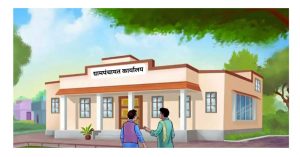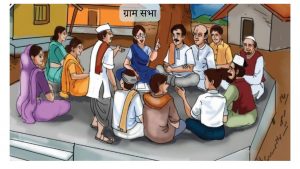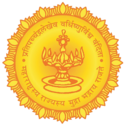In Maharashtra, Gram Panchayats are governed by section 5 of the Bombay Gram Panchayat Act, 1958. Population is considered while establishing a new Gram Panchayat in the state. Gram Panchayat is managed with the help of Sarpanch, Upasarpanch, Gram Sevak. Gram Panchayat is the lowest but most important part of Panchayat Raj. There are 27,951 Gram Panchayats in Maharashtra.
Sections in the Gram Panchayat Act
As per Section 5 of the Maharashtra Gram Panchayat Act 1958, there should be one Gram Panchayat for every village.
- The people of the village shall elect their representatives in proportion to the population by direct voting as follows to carry out the functions of the Gram Panchayat.
- Voting of the said members shall be by adult and secret ballot.
Reservation :-
- 50% of the total seats are reserved for women in Gram Panchayat.
- Seats are reserved for Scheduled Castes and Scheduled Tribes in proportion to population.
- 27% seats are reserved for people belonging to other backward class category.
Qualification of members :-
- He should be a member of Gram Sabha of the village.
- His name must be in the electoral roll.
- He should have completed 21 years of age.
- Presidents of agricultural and credit cooperative societies can be taken as associate members. But it requires the permission of Gram Panchayat, now this method has been discontinued.
-
Term – The term of Gram Panchayat is for 5 years. It is mandatory to hold elections within 6 months after dissolution of Gram Panchayat and no extension is allowed under any circumstances. The State Government has the right to dissolve the Gram Panchayat. If more than half of the members resign, the state government directs for by-elections or decides to dismiss. The Collector sends the report in that context to the Government.
- A population of 300 to 1500 in hilly areas has seven members.
Sarpanch and Deputy Sarpanch
Sarpanch is the executive head of Gram Panchayat. The members elected from Gram Panchayat elect Sarpanchs and Deputy Sarpanchs from among themselves. (Since 2017, election of Sarpanch is done directly from the people). The post of Sarpanch is reserved while the post of Sub-Sarpanch is open and the reservation draw is made in the Collector’s office before the election. The District Collector issues a notification to convene the first meeting of the Gram Panchayat after the election. An officer appointed by the District Collector presides over this meeting.
Gram sevak
Gram sevaka is known as Secretary, Chief Executive Officer or Chitnis of Gram Panchayat. The Gram Sevak is selected by the Zilla Parishad and appointed by the Chief Executive Officer. He is a servant of Zilla Parishad. His salary is from the district fund. He is closely controlled by the Group Development Officer.
Work of Gram Sevak
- Preparation of Gram Panchayat budget.
- To maintain the office of Gram Panchayat.
- Advising village people on health, agriculture, village development, education etc.
- To inform people about different government schemes for village development.
- Collecting taxes and providing various types of certificates to the public.
- Working as a Registrar for Birth and Death Registration.
- Working as a Child Marriage Prohibition and Public Information Officer.
- Acting as the Registration Officer for laborers and registering construction workers..
- Acting as Biodiversity Committee Secretary.
- To perform the functions of Registrar of Marriages.
- Acting as Emergency Committee Secretary.
Gram Sabha

- Mumbai Gram Panchayat Act, 1958 Section 7A established a Gram Sabha for each village.. Every person entitled to vote in the village is a member of the Gram
Sabha. Since the Gram Panchayat is the executive body of the Gram Sabha, it is responsible to the Gram Sabha. A committee named Bongirwal strengthened the Gram Sabha. According to the 73rd Constitutional Amendment in 1993. - There are four meetings of Gram Sabha. These meetings are called on 26th January, 1st May, 15th August and 2nd October. Since 2018 Gram Sabha on 2nd October has been canceled and it will be held before the start of the new financial year.
President
The sarpanch of the gram panchayat presides over the meeting of the gram sabha. In his absence there is a Deputy Sarpanch and if both are absent, one of the members is elected as Chairman
-
- Works done by Gram Sabha
- Approval for taxation.
- Paying wages for development works of Gram Panchayat.
- Appointment of vigilance committee to monitor actual expenditure and work of Gram Panchayat.
- Electing Gram Panchayat Members.
- The Gram Sabha can send suggestions and votes to all departments through resolution.
Income of Gram Panchayat
- Tax on houses and vacant lots within Gram Panchayat limits
- Business tax, travel tax, tax on purchase and sale of animals
- Subsidy from State Government in proportion to land revenue
- Grants from Zilla Parishad for development works.
Functions of Gram Panchayat
- Building and repairing roads in the village.
- Keeping records of births, deaths, and marriages.
- Arranging street lighting, supplying drinking water, and managing wastewater systems.
- Providing facilities for education and health, along with maintaining public cleanliness.
- Implementing schemes for agricultural development and livestock improvement.
- Organizing village markets, fairs, festivals, processions, and religious events.
- Proper utilization of taxes collected within the Gram Panchayat jurisdiction and funds received from the government.




